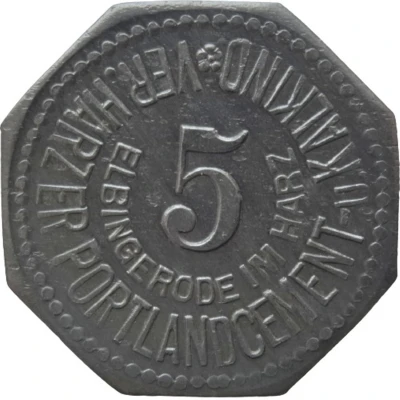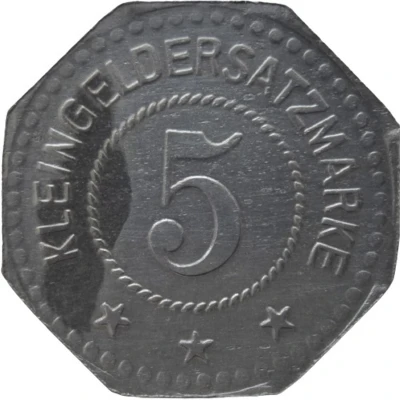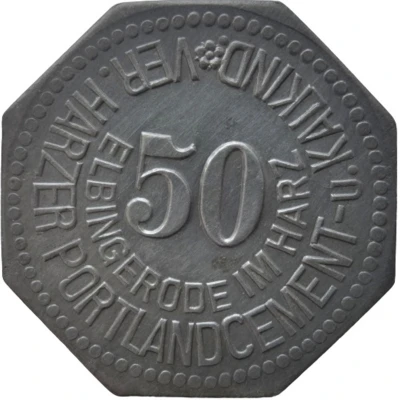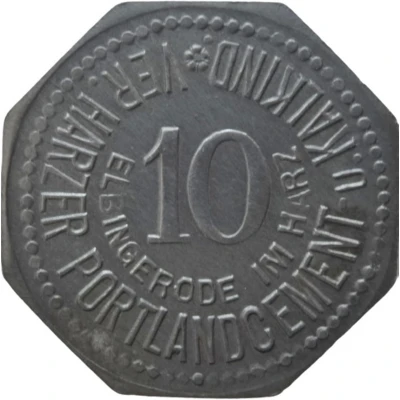
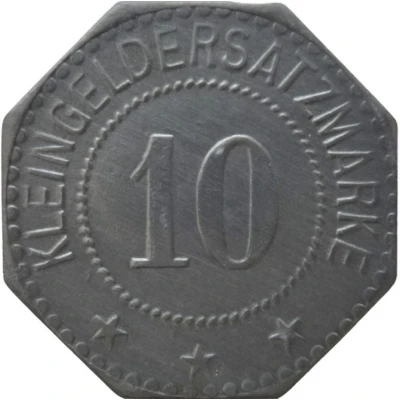

© Willem63 (CC BY-NC-SA)
10 Pfennigs - Elbingerode (Ver. Harzer Portlandcement u. Kalkind.) ND
| Iron | 2.7 g | 20.8 mm |
| Issuer | City of Elbingerode im Harz (Prussian province of Hanover) |
|---|---|
| Type | Standard circulation coin |
| Value | 10 Pfennigs (10 Pfennige) (0.10) |
| Currency | Mark (1914-1924) |
| Composition | Iron |
| Weight | 2.7 g |
| Diameter | 20.8 mm |
| Thickness | 1.1 mm |
| Shape | Octagonal (8-sided) |
| Technique | Milled |
| Orientation | Medal alignment ↑↑ |
| Demonetized | Yes |
| Updated | 2024-10-04 |
| Numista | N#319798 |
|---|---|
| Rarity index | 95% |
Reverse
Pearl rim, legend surrounding rope circle with denomination centered
Script: Latin
Lettering:
KLEINGELDERSATZMARKE
10
★ ★ ★
Edge
Plain
Comment
Menzel: BBBVereinigte Harzer Portlandcement und Kalkindustrie
Founded in 1898 as “Vereinigte Harzer Kalkindustrie” based in Elbingerode. 1912 change of name as above, 1925 relocation to Wernigerode. The quarries and lime works Christinenklippe, Garkenholz, Kleiner Stein and Mühlental were operated near Rübeland (in the immediate vicinity of the two famous stalactite caves) and Elbingerode. A hydroelectric power plant was also operated near the Kleiner Stein lime works, and a modern Portland cement factory was connected to the Christinenklippe lime works.
Interesting fact
One interesting fact about this coin is that it was made of iron, which was a unusual choice of material for coins at the time, as most coins were made of precious metals like gold, silver, or copper. The use of iron in the production of coins was a sign of the economic and industrial development of the region, as iron was a readily available resource in the Harz mountains where the coin was minted.
